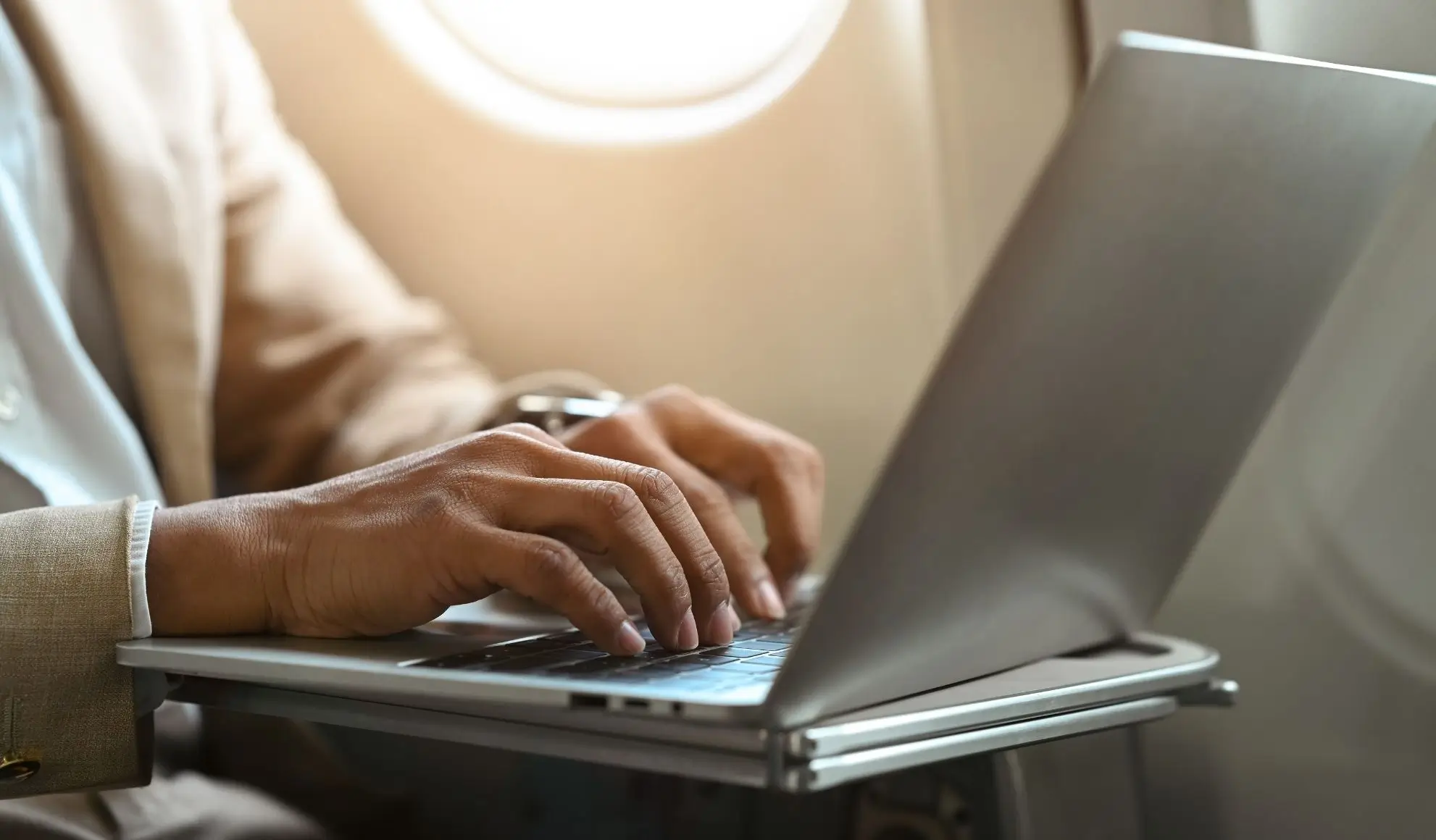Have you ever received a call just as the aircraft doors were closing, or an urgent email from your boss right before take-off, and wondered if in-flight Wi-Fi would keep you connected once airborne?
And how many times have you heard the announcement “Please switch to flight mode” and thought, “If there’s internet on board, why do I still need to activate flight mode?”
With the arrival of Starlink internet and the latest in-flight connectivity systems, cabin performance is approaching home fibre speeds. Yet, flight mode rules haven’t changed.
This guide explains how in-flight Wi-Fi works, why flight mode is still required, which technologies – from Ku-band to Starlink Aviation – are revolutionising private aviation, and how Flyness ensures seamless internet on board with all-inclusive charter solutions.
Can you use the internet on board? How in-flight connectivity works
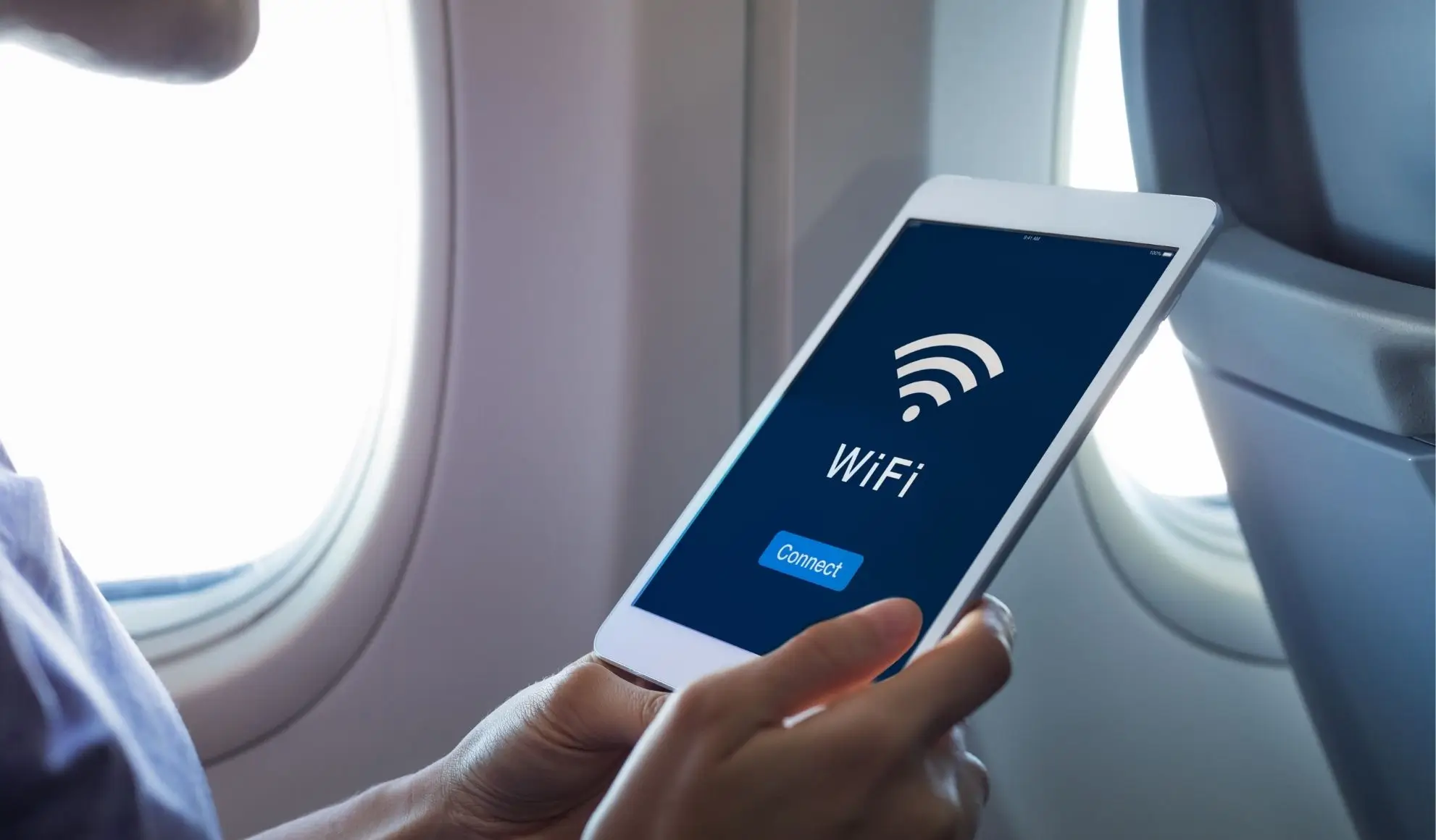
Yes, you can browse, chat, and even make video calls mid-air. But it’s not your phone searching for a mobile network: everything is handled by dedicated in-flight connectivity systems.
- Cabin router and onboard network
Once onboard, your device connects to the aircraft’s Wi-Fi router. Integrated with avionics, it manages traffic, security, and data flows to external networks.
2. Router to antenna: ATG and satellites
On the fuselage top, or enclosed in a tail radome – the dome-shaped protective fairing for radar and communication antennas – sits the aircraft’s antenna:
- Air-to-Ground (ATG 4G/5G): connects the aircraft to ground towers up to 10,000 m of altitude. Efficient over Europe, less so across mountains or sea.
- Satellite links: from Ku-band and Ka-band geostationary satellites to new Starlink low-earth orbit (LEO) constellations, providing low-latency, high-speed internet on board.
3. Ground stations and Internet backbone
Signals are routed via teleports connected to global fibre. Content caching and acceleration tools optimise performance for real-time applications.
4. Data packages and passenger priority
On commercial flights, in-flight Wi-Fi is usually sold either by the hour or by megabyte. On private flights and all-inclusive charters, Flyness can provide aircraft equipped with advanced in-flight connectivity technology, including an unlimited Wi-Fi package quotation.
The crew uses a dedicated dashboard to prioritise internet on board for passenger use over other onboard systems, or to block streaming if the bandwidth drops below the guaranteed service threshold.
The result: as long as you stay connected to the aircraft’s in-flight Wi-Fi (and not your 5G), you can enjoy safe and stable internet access during the flight — with performance on modern private jets and next-generation commercial aircraft that comes close to a fibre-connected office.
In-flight connectivity: Wi-Fi on board vs. your device’s cellular network
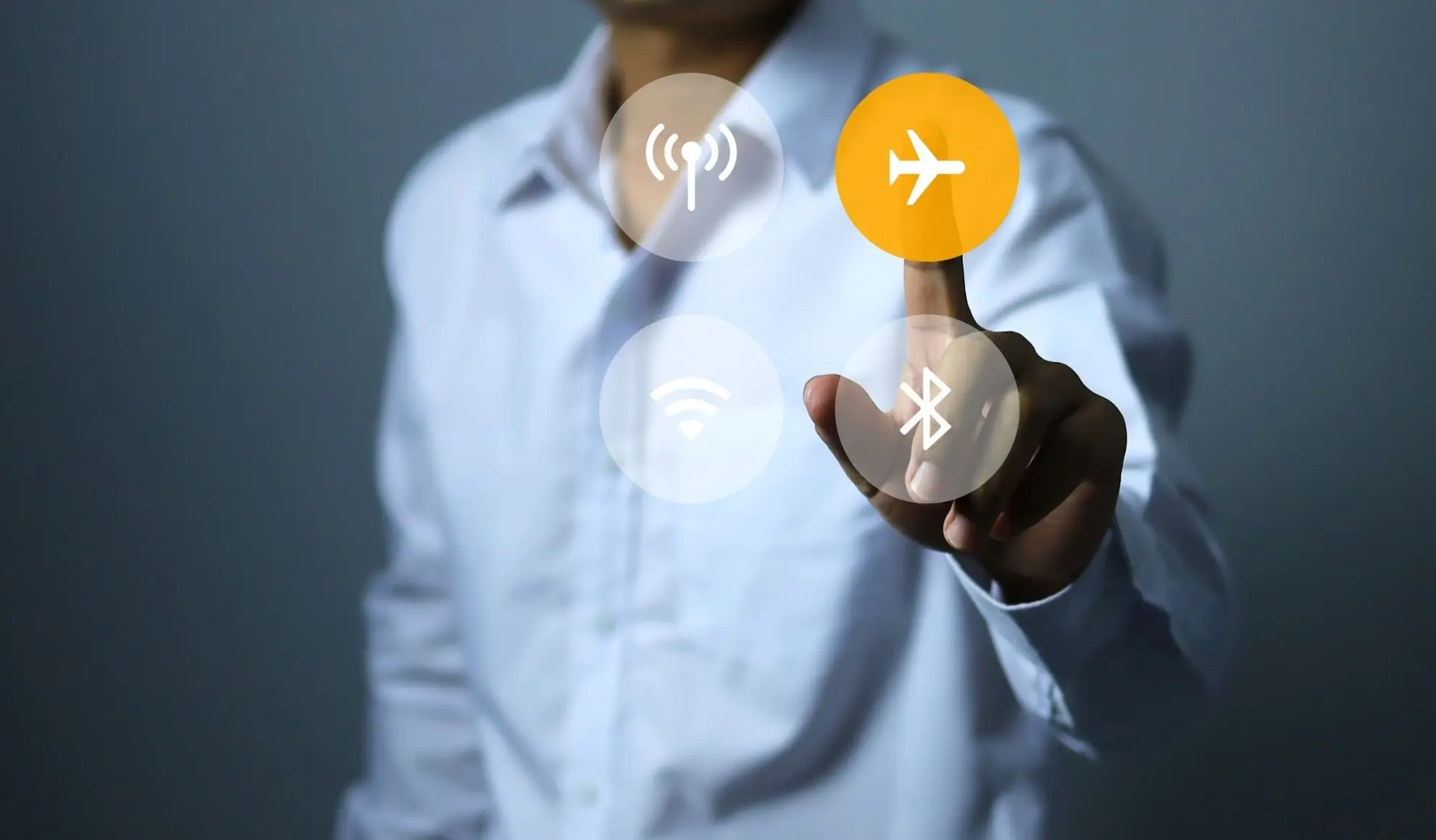
On board an aircraft, the in-flight Wi-Fi system uses the same 2.4 GHz and 5 GHz frequencies as a home router, but it is fully integrated into the cabin avionics. Data traffic passes through an aeronautical firewall and remains completely isolated from navigation and flight control systems. The router is calibrated to operate at very low power, ensuring uniform cabin coverage without interfering with the aircraft’s sensitive electronics.
By contrast, the 4G/5G cellular module of a smartphone works on different frequency bands and uses network search algorithms that increase transmission power when no ground signal is available. If not disabled, it may generate short but intense peaks of radio frequency output. Multiplied by dozens of devices, these bursts can interfere with onboard radio receivers or nearby airport microcells.
This is why, at boarding, the crew instructs passengers to activate flight mode: the smartphone shuts down its cellular transmitters (and high-power Bluetooth) while allowing Wi-Fi to reconnect safely to the aircraft’s onboard network.
In the following sections, we will explore why this procedure remains mandatory and which new technologies — from Starlink internet to next-generation air-to-ground 5G networks — are revolutionising in-flight connectivity without compromising flight safety.
Why flight mode is still required
Before exploring the latest satellite innovations and flat-rate data packages, let’s pause for a moment on that familiar instruction repeated by the captain before take-off: “Please switch on flight mode.”
If in-flight Wi-Fi is on and private jet cabins are increasingly connected, why must we still disable 4G/5G?
The answer lies in a combination of EASA regulations, operational common sense, and several cases of interference not widely known to the public.
Let’s take a closer look.
EASA rules in force
The European regulations on Portable Electronic Devices (PED) – summarised in AMC 20-25 and the guidance GM3 CAT.GEN.MPA.140 – state that a phone may remain switched on only if its cellular transmitter is disabled, or if the aircraft has obtained specific RF immunity certification.
Without such certification, the captain may require all devices to be completely switched off during critical phases of flight (taxi, take-off, landing) and remains responsible for any exceptions (e.g., certified medical devices).
Documented interference
According to the European Cockpit Association Safety Bulletin 01/2024 , there were 48 reports of 4G/5G “pings” picked up in pilots’ headsets during take-off. While these events did not compromise flight safety, they did distract the crew and could saturate VHF receivers when many phones transmitted simultaneously.
This is why the media debate does not change the rule. Headlines such as “No more reason to impose flight mode” (Il Post, February 2024) may suggest the requirement is outdated. In reality, EASA continues to mandate flight mode until all fleets are certified for full RF immunity – the ability of aircraft systems to function correctly in the presence of external electromagnetic fields. As of today, this requirement applies only to a small percentage of new-generation aircraft.
Internet on board and in-flight connectivity
Activating flight mode disables 4G/5G transmitters, NFC and high-power Bluetooth. You can then reactivate only the Wi-Fi function to connect safely to the aircraft’s internet on board network.
This network operates on channels managed by the avionics and filtered through aeronautical firewalls, allowing you to stay connected during the flight without introducing any unwanted interference into onboard systems.
New in-flight connectivity technologies 2025–26: from Starlink internet to Gogo Galileo
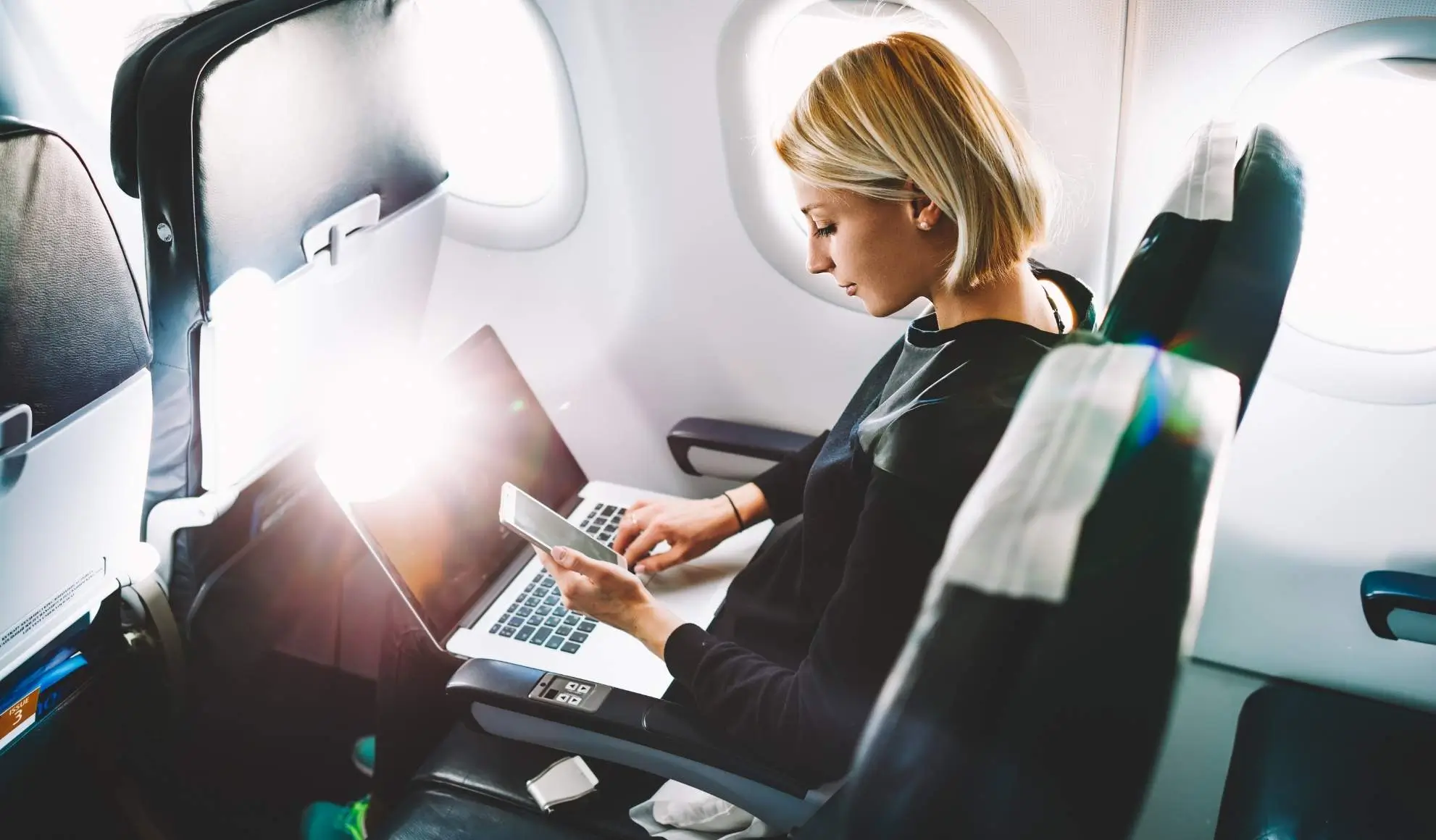
The sky is changing faster than we imagine (as we already discussed in our article on how technological innovation is transforming air travel). In just twelve months, the available bandwidth on a private flight has gone from “enough to check emails” to “HD video conferencing while flying over the Baltic Sea.”
Here are four innovations that, starting this winter, are reshaping the way we work (and relax) at 35,000 feet – with tangible advantages for those booking an all-inclusive charter.
Starlink Aviation: fibre-speed internet in the sky
The first European jets certified with Starlink internet – including Embraer Legacy and several Global 6000 aircraft – began flying in summer 2025.
The flat-panel antenna connects to Starlink’s LEO satellite constellation with latency under 100 milliseconds and real speeds exceeding 80 Mbps. For passengers, this means no freezing Zoom calls, cloud file uploads, and 4K streaming with no buffering.
Gogo Galileo and the return of Ka-band
When the route covers long oceanic sectors or polar regions – where Starlink is not yet fully meshed – Gogo Galileo comes into play.
The new Ka-band modem leverages next-generation geostationary satellites and reduces latency by up to 40% compared to older Ku-band solutions. Aircraft such as the Praetor 600 and retrofitted Falcon 2000 are already in service with this type of in-flight connectivity.
EAN: 5G coverage across (almost) all of Europe
For intra-EU flights under two hours – such as Milan–Paris or Rome–Vienna – the hybrid European Aviation Network (EAN) uses a ground-based 4G/5G backbone communicating with the aircraft at low altitude.
The resulting latency and speeds are more than sufficient for Teams calls, VPN access, and real-time report uploads, with data costs up to 30% lower than traditional satellite solutions.
Multi-orbit antennas: the “plug & play” future
Collins Aerospace, Satcom Direct and Intelsat are certifying flat-panel electronic antennas capable of switching seamlessly between LEO, MEO, and GEO satellites. Deployment on large-cabin aircraft (Falcon 10X, G700) is scheduled for 2026.
The result: uninterrupted in-flight Wi-Fi from Reykjavik to Cape Town, with no visible handshakes or connectivity drops for passengers.
How the air charter industry is adapting
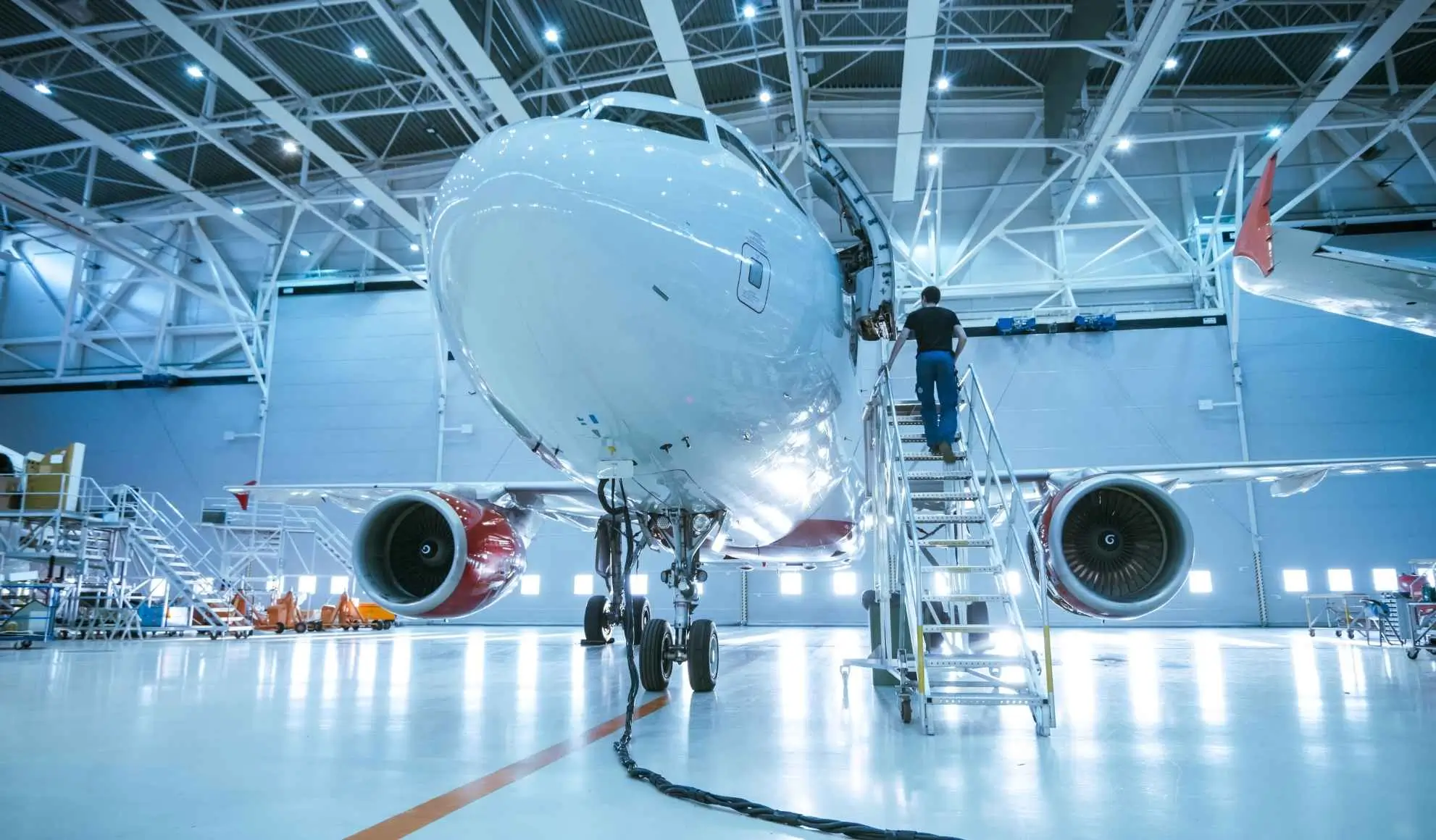
The leap in in-flight connectivity is not “just technology”: when internet on board becomes a primary need, Flyness provides aircraft equipped with advanced systems that deliver real, measurable advantages.
- Business travel on executive jets
The aircraft becomes a true meeting room in the sky: you can join video calls during taxi, share cloud-based presentations, and close a deal before landing. - Incentive groups and sports teams on commercial aircraft
Enjoy seamless multimedia content, create group connections for gamified quizzes, share collaborative playlists, or run briefings in real time. Organisers can even upload updated room lists to the cloud and share them with ground staff before the plane touches down.
In short, with Flyness, the new level of in-flight Wi-Fi is not just a technical add-on but a genuine operational advantage. For managers, it transforms flight hours into productive working time. For corporate and sports groups, it builds engagement and enthusiasm even before landing.
Request a quote for a private or all-inclusive charter with guaranteed in-flight Wi-Fi.
Best practices for passengers
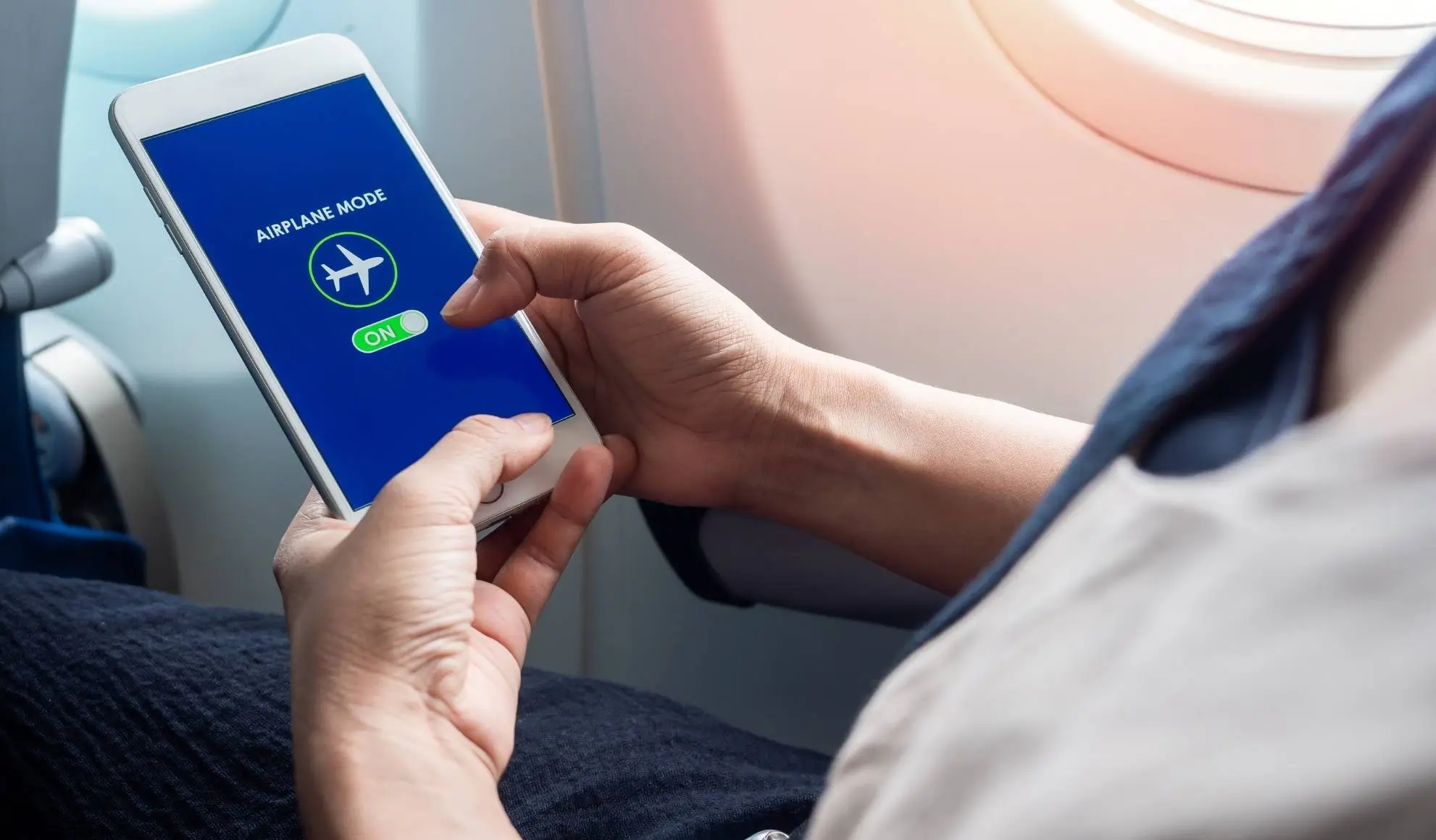
You’ve chosen a private flight to save time, not to waste it on connectivity issues or security risks. Yet whether you are a CEO, an athlete, or an event planner, there are still a few simple rules to follow to fly safely and make the most of your in-flight Wi-Fi.
Here’s a quick checklist to keep in mind before fastening your seatbelt:
- Flight mode ON, Wi-Fi ON
As soon as you sit down, activate flight mode: it switches off 4G/5G, NFC, and high-power Bluetooth. Then immediately turn Wi-Fi back on and connect to the aircraft’s internet on board. It’s the only channel controlled by the avionics and approved by EASA. - Low-impact headphones and devices
Choose low-energy Bluetooth headphones: they avoid RF spikes and don’t overload the network. Avoid portable speakers or personal LTE hotspots: they can cause interference and annoy other passengers. - Download first, browse better
Movies, heavy presentations, software updates – download them before take-off. This way, you free up bandwidth for video calls and cloud collaboration during the flight. - VPN and strong passwords
Even if the onboard router is protected by aeronautical firewalls, always use a corporate VPN and long, secure passwords: end-to-end encryption safeguards confidential files and client data. - Respect critical flight phases
Taxi, take-off, and landing remain moments when the captain may require all devices to be switched off. It’s rare, but safety comes first: follow instructions, then go back online as soon as the seatbelt sign is turned off.
By following these best practices, your in-flight connectivity becomes a natural extension of your office – or your pre-event lounge.
Are you ready to experience the most connected cabin in the sky?
Contact Flyness with your bandwidth needs for a custom charter quote with guaranteed in-flight Wi-Fi.

